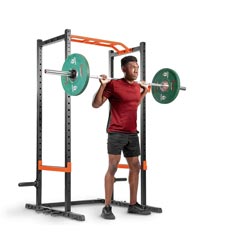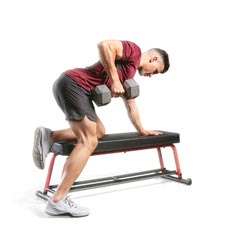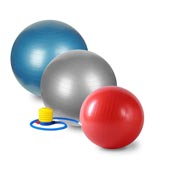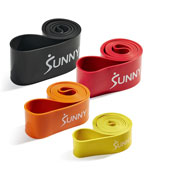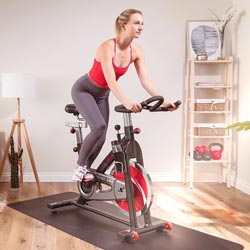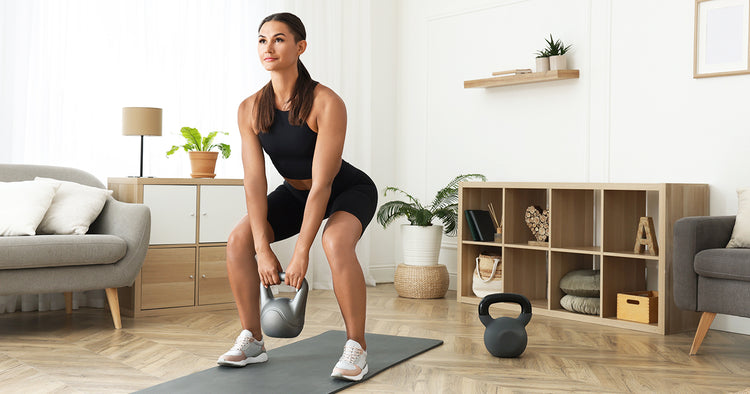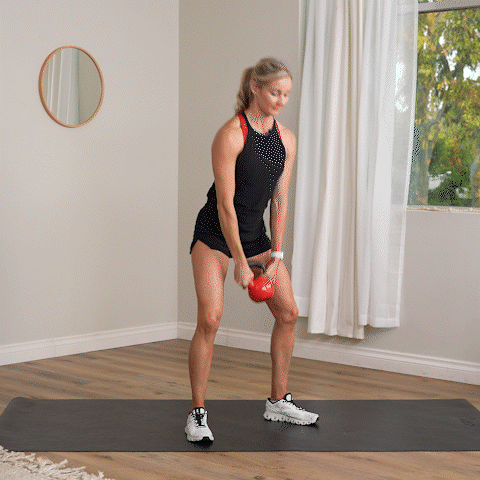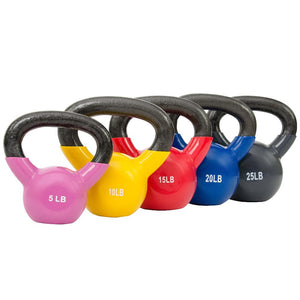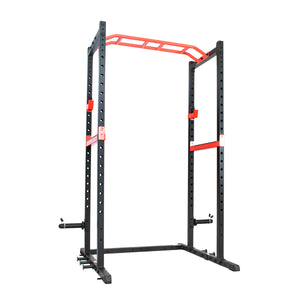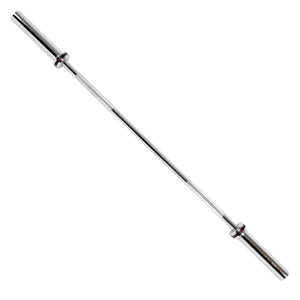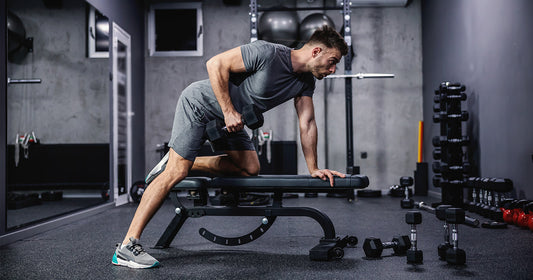Have you ever used a kettlebell? You’ve probably seen them at the gym or may have been lucky to have a trainer teach you how to do a fancy move or two, but they can be a bit overwhelming to pick up if you’re new to the game.
If they’re not a part of your regular exercise routine, they should be! And if they already are, are you moving safely and effectively?
In this article, I’ll go over the benefits of kettlebells, brush up on the basics, and leave you with a handful of kettlebell exercises to incorporate into your workout routine. But first, let’s travel back in history to get a better understanding of the kettlebell.
What is a Kettlebell?
A kettlebell is round-shaped steel or cast-iron weight, commonly described as resembling a cannonball with a handle and are typically made from cast iron, with dimensions increasing with weight (1).
The History of the Kettlebell
The use of kettlebells dates back to Russia in the 1700s and the word girya (kettlebell) first appears in a Russian dictionary in 1704, with excavations in Poland pre-dating early kettlebells to the seventeenth century.
In Russia, kettlebells are a matter of pride and a symbol of strength, with a colorful history throughout the twentieth century from circus strong men to the Red Army. Kettlebell sport, also referred to as Girevoy Sport originated in Eastern Europe in 1948 (1).
The Benefits of Kettlebell Training
Are you curious about the benefits of adding kettlebell training to your routine? Below, you’ll find just a few of the reasons why I love incorporating kettlebell exercises into my training.
Kettlebells Are a One-Stop-Work Out-Shop
A kettlebell is a one-stop shop that seamlessly combines strength training, cardiorespiratory conditioning, core, stabilization, coordination, and dynamic mobility into one intense workout.
Kettlebells Are Designed for Compound Exercise
A key component of kettlebell training is its ability to work the entire body as a functional unit. Most kettlebell exercises are compound exercises working in multiple planes of motion, which means greater strength gains, calorie burn, and more during your workout sessions.
Kettlebells Can Significantly Increase Muscular Power
According to a study on adults aged 20-72, significant improvements in bench press strength, back extension endurance, and a high degree of transfer in performance of the traditional clean and jerk were recorded after 10 weeks of biweekly kettlebell training. These results indicate that kettlebell training significantly enhances muscular power (2).
Kettlebells Increase Your Athleticism
Kettlebell training takes a more athletic approach to movement and integrates the mind and body in one complex motion (3). So, if you’re looking to unleash your inner athlete and connect with your body, grab a kettlebell, and get moving!
Kettlebell Training vs. Dumbbell & Barbell Training
Kettlebell training can provide improved stimulus to the muscle through a longer range of motion during strength training when compared to dumbbells and barbells (2).
When you curl a dumbbell or barbell the resistance quickly drops off near the top of the movement; the forearm bones are supporting the weight. In contrast, the kettlebell’s center of gravity is removed by a good foot from the body after the curl. That means, your bicep will have to work hard through a longer range of motion and consequently get better growth stimulation than with a barbell or dumbbell.
When doing a chest press with a kettlebell, your pectorals get overloaded even at the lockout, because the KB hangs off to the sides. As opposed to with a barbell or dumbbell where the weight rests atop your vertical when arms are locked.
6 Kettlebell Exercises to Add to Your Exercise Routine
I have used kettlebells for specific exercises in the past (Kettlebell Swing, Goblet Squat, Kettlebell Rows) but, I have never designed a workout routine around kettlebells until recently.
About a month ago, I purchased three different-sized kettlebells and started adding some new exercises into my routine. I’ve experienced firsthand some of the incredible benefits I’ve shared above.
Below are six of my favorite kettlebell exercises that I’ve recently added to my routine. I hope you like them as much as I do.
- Staggered Stance Halo
- Reverse Lunge with Overhead Hold
- Staggered Stance Row
- Push Press
- Goblet Squat
- Kettlebell Swing
In this video, Sunny Trainer Sam Candler helps to demonstrate these incredible exercises. If you’ve been following along, Sam has also been working on nailing her kettlebell form for her 2022 goal and has all of the best tips to share from what she’s learned along the way.
1. Staggered Stance Halo

- Begin with your weight in one foot, while the other foot is extended slightly behind you and used as a kickstand for balance.
- Grab the kettlebell by the horns and raise it to your chest.
- Slowly rotate the kettlebell around your head, being careful to keep your core tight and engaged, spine and neck neutral.
- Repeat and don’t forget to reverse directions.
2. Reverse Lunge with Overhead Hold
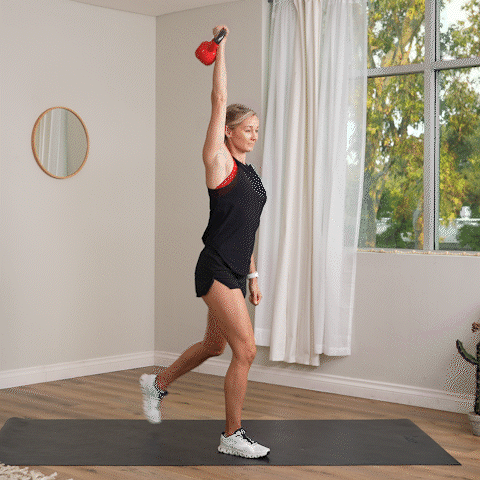
- Start with the kettlebell sitting between your feet.
- Bend your knees and hinge at your hips, pushing your butt back. Maintain your gaze straight ahead as you grab the kettlebell and swing it between your legs.
- Drive forward with your hips, bringing the kettlebell up to shoulder level with your wrist facing forward.
- Push upward and press the kettlebell up over your head.
- Once you have the kettlebell locked overhead, drop into a reverse lunge by extending the leg (opposite the arm holding the weight) back behind you while lowering your back knee until it’s just above the floor.
- Push back up driving through your front heel to step back into an upright position and repeat. Don’t forget to complete this move on the other side too.
3. Staggered Stance Row

- Place your kettlebell on the outside of your right foot.
- Position the ball of your left foot just outside and in line with the heel of your right foot.
- Maintaining a long spine and engaged core to avoid rotation, grab the handle with your right hand.
- With your right arm row draw the kettlebell to your rib cage.
- Slowly control the weight as you release the kettlebell back down and repeat.
4. Push Press
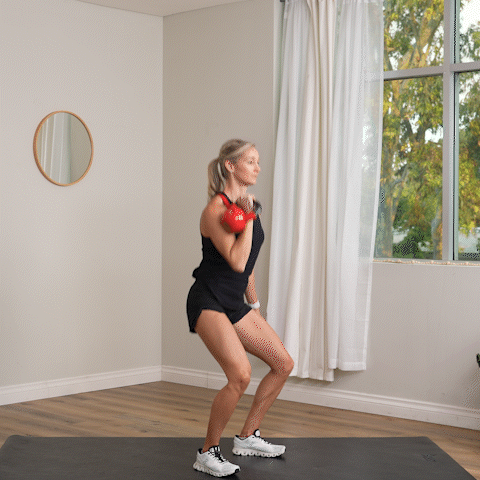
- With your feet shoulder-width apart and your toes facing forward, bend your knees while keeping your back straight as you pick up your kettlebell with care.
- Clasp your kettlebell in your hand of choice, and push yourself into a standing position, lifting the kettlebell to your shoulder so that your palm is facing forwards.
- Remaining in position, bend your knees slightly with your back and torso held straight to gain momentum and start the movement. Dip down to around mid-squat position, and once you have, change direction, driving your heels to the floor for maximum leverage.
- As you propel your force upwards and move back towards a standing position, push your kettlebell overhead to full extension and lock your arm.
- As you fully extend and lock the weight in place, make sure you flex your knees slightly to absorb the impact.
- Bring the weight back down to the starting position with control, and repeat.
5. Squat to Bicep Curl
- Grab your kettlebell by the horns, holding it upside down, gripping it with both hands, and with the base pointing up towards your face.
- Now extend your arms, bringing the kettlebell down in front of you.
- Inhale and begin to squat, sitting back in your hips, keeping your core tight and torso upright. Allow your elbows to track between your knees, stopping when they touch your inner thighs.
- Curl the kettlebell up towards your chest, keeping elbows stationary, and using your biceps to power your movement, all while holding your squat steady.
- Drive up through your heels back to the starting position and repeat.
6. KB Swing
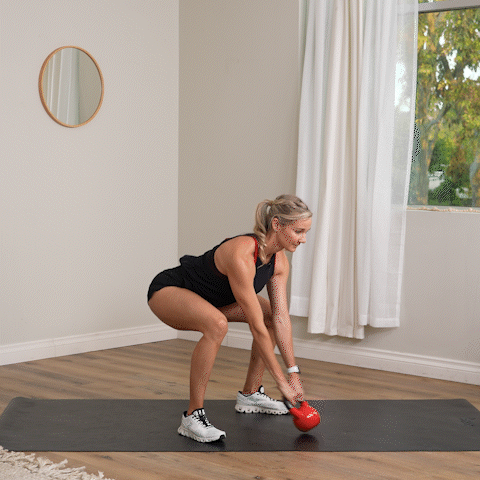
- Position your feet about shoulder-width apart, firmly planted on the ground. Place your kettlebell out in front of you so that the kettlebell is forming a triangle with your feet.
- Fold back at the hips, driving the glutes back with a slight bend at the knees. Tipping your torso forward with a neutral spine, reach forward to grab the kettlebell handle.
- Inhale as you grasp the kettlebell handle firmly with both hands. Roll your shoulders back slightly to help control the momentum of the swing while preventing a forward curve of the spine. Engage your core.
- Swing the kettlebell in between your legs, so the base of the kettlebell is facing the wall behind you.
- Exhale and, in one powerful movement, squeeze your glutes and hamstrings as hard as you can to rise to an upright position. During this part of the exercise, make sure the hips do not extend past your shoulders and allow the kettlebell to swing forward as high as it will naturally go, which is usually around shoulder height.
- Inhale and swing the kettlebell back toward the floor (which it will automatically want to do) while pressing your hips back. Allow the weight to swing between your legs while keeping your neck aligned with your spine.
- Continue the kettlebell swings, remembering to keep your torso straight and to power the movement with your hips and glutes. Don't exit the move suddenly by dropping the kettlebell or forcing your momentum to stop. Instead, reduce the power you use with each swing until you can comfortably and safely return the kettlebell to the floor.
In Conclusion
Kettlebells can be a safe and effective exercise modality that enhances your training experience. Used properly, kettlebells can help to accelerate fat loss and develop muscular strength, muscular endurance, and cardiorespiratory endurance (3).
If I was stuck on an island and was told that I could only have one type of exercise equipment for the rest of my island life, I would hands down choose a kettlebell.
Since starting this article, I have purchased a kettlebell set and have been working out with it every day. I’ve fallen in love with kettlebell exercise, and I know if you give it a chance you will too.
(1) Kettlebell Training, Book, April 1st 2021 https://books.google.com/books?hl=en&lr=&id=ICoOEAAAQBAJ&oi=fnd&pg=PP11&dq=kettlebell+&ots=N71LBY9hs9&sig=Pfe0jQnGftPTA_uLCXGB7aG-Svg#v=onepage&q=kettlebell&f=false. Accessed 21, March 2022.
(2) Transference of Kettlebell Training to Strength, Power, and Endurance, Journal, February 2013 https://pubmed.ncbi.nlm.nih.gov/22549084/. Accessed 21, March 2022.
(3) Using Kettlebell Brings Full-Body Experience, Journal, June 8th 2020 https://books.google.com/books?hl=en&lr=&id=ICoOEAAAQBAJ&oi=fnd&pg=PP11&dq=why+working+out+with+kettlebell+is+beneficial&ots=N71LBW8jva&sig=WXPJOBX-Mi0n7xIpQ6ofLEHDmp4#v=onepage&q=why%20working%20out%20with%20kettlebell%20is%20beneficial&f=false. Accessed 21, March 2022.

